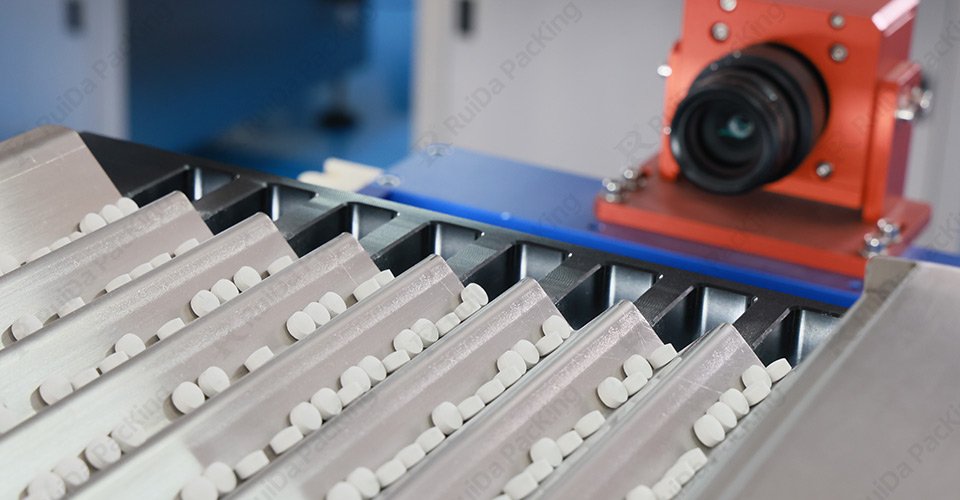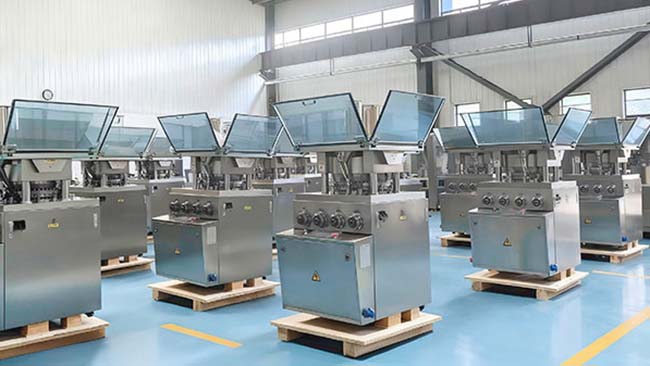Στις φαρμακευτικές και υγειονομικές βιομηχανίες, η ακρίβεια και η αποτελεσματικότητα είναι αδιαπραγμάτευτες. Μετρητές χαπιών είναι απαραίτητα εργαλεία που βοηθούν στη βελτιστοποίηση της διαχείρισης αποθεμάτων, στη διασφάλιση της ακριβούς χορήγησης και στη διατήρηση της συμμόρφωσης με τους κανονισμούς. Είτε είστε φαρμακοποιός, πάροχος υγειονομικής περίθαλψης είτε ασχολείστε με μεγάλης κλίμακας παραγωγή, η κατανόηση των διαφόρων τύπων μετρητών χαπιών που διατίθενται είναι κρίσιμη για τη βελτίωση της παραγωγικότητας και της ακρίβειας. Σε αυτόν τον οδηγό, θα εξερευνήσουμε διαφορετικούς τύπους μετρητών χαπιών, τα χαρακτηριστικά τους και πώς να επιλέξετε αυτόν που ταιριάζει καλύτερα στις ανάγκες σας.

1. Χειροκίνητοι μετρητές χαπιών
Οι χειροκίνητοι μετρητές χαπιών είναι ο απλούστερος και πιο παραδοσιακός τύπος εργαλείων καταμέτρησης χαπιών. Χρησιμοποιούνται συχνά σε μικρότερα φαρμακεία ή από επαγγελματίες υγείας για γρήγορες και μικρής κλίμακας εργασίες καταμέτρησης.
Πώς λειτουργούν
Αυτές οι συσκευές συνήθως περιλαμβάνουν ένα δίσκο για χάπια με σχισμές ή αυλακώσεις καταμέτρησης που σας επιτρέπουν να μετράτε χάπια σύροντάς τα σε ξεχωριστά διαμερίσματα. Ορισμένα μοντέλα διαθέτουν ενσωματωμένη σπάτουλα για διαλογή.
Φόντα
- Οικονομικά αποδοτικό και με χαμηλή συντήρηση.
- Δεν απαιτείται ηλεκτρικό ρεύμα ή μπαταρίες.
- Κατάλληλο για μικρής κλίμακας εργασίες ή ανάγκες χαμηλού όγκου.
Μειονεκτήματα
- Χρονοβόρο και απαιτητικό σε εργασία.
- Υψηλότερος κίνδυνος ανθρώπινου λάθους σε σύγκριση με τις αυτοματοποιημένες λύσεις.
Ιδανικό για
Οι χειροκίνητοι μετρητές χαπιών είναι ιδανικοί για μικρά φαρμακεία, ιατρικές κλινικές ή χώρους όπου η ακρίβεια της μέτρησης είναι λιγότερο κρίσιμη.
2. Ημιαυτόματο χάπι Μετρητές
Οι ημιαυτόματοι μετρητές χαπιών γεφυρώνουν το χάσμα μεταξύ της χειροκίνητης μέτρησης και των πλήρως αυτοματοποιημένων συστημάτων. Προσφέρουν βελτιωμένη ακρίβεια και αποτελεσματικότητα χωρίς να απαιτούν σημαντική επένδυση.
Πώς λειτουργούν
Οι ημιαυτόματοι μετρητές χρησιμοποιούν έναν συνδυασμό χειροκίνητης εισαγωγής και αυτοματοποιημένων μηχανισμών. Τα χάπια συνήθως τοποθετούνται σε μια χοάνη και η συσκευή τα μετρά και τα διανέμει σε δοχεία ή δίσκους.
Φόντα
- Ταχύτερη από τη χειροκίνητη καταμέτρηση.
- Πιο ακριβής με μειωμένο ανθρώπινο λάθος.
- Συμπαγής σχεδιασμός, κατάλληλος για μικρές έως μεσαίες λειτουργίες.
Μειονεκτήματα
- Περιορισμένη χωρητικότητα σε σύγκριση με πλήρως αυτοματοποιημένες μηχανές.
- Απαιτείται ακόμα κάποια χειροκίνητη επίβλεψη.
Ιδανικό για
Οι ημιαυτόματοι μετρητές χαπιών είναι κατάλληλοι για ανεξάρτητα φαρμακεία, μονάδες παραγωγής μικρής κλίμακας ή εγκαταστάσεις υγειονομικής περίθαλψης με μέτριο φόρτο εργασίας.
3. Πλήρως αυτόματο Χάπι Μετρητές
Πλήρως αυτόματοι μετρητές χαπιών αντιπροσωπεύουν την κορυφή της αποδοτικότητας και της ακρίβειας. Αυτά τα μηχανήματα έχουν σχεδιαστεί για περιβάλλοντα μεγάλου όγκου εργασιών και μπορούν να χειριστούν πολύπλοκες εργασίες καταμέτρησης με ελάχιστη επίβλεψη.
Πώς λειτουργούν
Τα πλήρως αυτοματοποιημένα συστήματα χρησιμοποιούν προηγμένες τεχνολογίες όπως αισθητήρες, κάμερες και μεταφορικούς ιμάντες για την ακριβή καταμέτρηση, ταξινόμηση και χορήγηση χαπιών. Αυτά τα μηχανήματα συχνά ενσωματώνονται με συστήματα διαχείρισης αποθεμάτων για απρόσκοπτες λειτουργίες.
Φόντα
- Υψηλής ταχύτητας καταμέτρηση και διανομή.
- Εξαιρετική ακρίβεια και ελάχιστο ποσοστό σφάλματος.
- Χειρίζεται μεγάλες ποσότητες χωρίς κόπο.
- Μειώνει το κόστος εργασίας και αυξάνει την παραγωγικότητα.
Μειονεκτήματα
- Δαπανηρή αρχική επένδυση.
- Απαιτεί τακτική συντήρηση και τεχνική εξειδίκευση.
Ιδανικό για
Τα μεγάλα φαρμακεία, οι κατασκευαστές φαρμακευτικών προϊόντων και οι εγκαταστάσεις υγειονομικής περίθαλψης με μεγάλους όγκους εργασιών επωφελούνται περισσότερο από τους πλήρως αυτόματους μετρητές χαπιών.
4. Οπτικό χάπι Μετρητές
Οι οπτικοί μετρητές χαπιών χρησιμοποιούν εξελιγμένα συστήματα κάμερας και αισθητήρες για την καταμέτρηση των χαπιών με βάση το σχήμα, το μέγεθος και το χρώμα τους. Αυτές οι συσκευές είναι ιδιαίτερα χρήσιμες για τη διασφάλιση της ακρίβειας στην καταμέτρηση μεικτών ή ακανόνιστων χαπιών.
Πώς λειτουργούν
Τα χάπια τοποθετούνται σε έναν μεταφορικό ιμάντα ή περιστρεφόμενο δίσκο, όπου σαρώνονται από κάμερες υψηλής ανάλυσης. Στη συνέχεια, η συσκευή μετρά κάθε χάπι και το ταξινομεί όπως απαιτείται.
Φόντα
- Ιδανικό για την καταμέτρηση μικτών χαπιών ή την αναγνώριση ανωμαλιών.
- Εξαιρετικά ακριβές, ακόμη και για δισκία ακανόνιστου σχήματος.
- Μπορεί να ταξινομήσει τα χάπια κατά μέγεθος ή τύπο.
Μειονεκτήματα
- Ακριβό και πολύπλοκο στη λειτουργία.
- Απαιτείται ένα καθαρό περιβάλλον για τη διατήρηση της ακρίβειας.
Ιδανικό για
Τα φαρμακεία και οι κατασκευαστές που διαχειρίζονται ποικίλα αποθέματα χαπιών ή απαιτούν αυστηρά πρότυπα ποιοτικού ελέγχου θα πρέπει να εξετάσουν το ενδεχόμενο χρήσης οπτικών μετρητών χαπιών.
5. Δονητικό χάπι Μετρητές
Οι δονητικοί μετρητές χαπιών χρησιμοποιούν δονούμενες πλάκες για να μετακινούν τα χάπια μέσα στους θαλάμους καταμέτρησης. Είναι αποτελεσματικοί, ακριβείς και χρησιμοποιούνται ευρέως σε αυτοματοποιημένα περιβάλλοντα.
Πώς λειτουργούν
Τα χάπια φορτώνονται σε έναν δονούμενο δίσκο που τα κινεί με ελεγχόμενο τρόπο μέσω αισθητήρων, οι οποίοι μετρούν κάθε χάπι καθώς περνάει.
Φόντα
- Γρήγορο και αποτελεσματικό για ομοιόμορφα χάπια.
- Απλός σχεδιασμός και εύκολη συντήρηση.
- Αξιόπιστο για καταμέτρηση μεγάλου όγκου.
Μειονεκτήματα
- Λιγότερο αποτελεσματικό για χάπια ακανόνιστου σχήματος.
- Περιορισμένες δυνατότητες ταξινόμησης.
Ιδανικό για
Γραμμές παραγωγής φαρμακευτικών προϊόντων υψηλής ταχύτητας ή φαρμακεία που διαχειρίζονται μεγάλες ποσότητες χαπιών τυποποιημένου μεγέθους.
6. Χάπι χύμα Μετρητές
Οι μετρητές χαπιών χύμα έχουν σχεδιαστεί για βιομηχανική κλίμακα, γεγονός που τους καθιστά απαραίτητους στην φαρμακευτική παραγωγή. Αυτά τα μηχανήματα μπορούν να χειριστούν χιλιάδες χάπια ανά ώρα με απαράμιλλη ακρίβεια.
Πώς λειτουργούν
Τα χάπια τροφοδοτούνται σε μια χοάνη χύμα και ταξινομούνται μέσω προηγμένων αισθητήρων ή μηχανικών συστημάτων. Το μηχάνημα μετρά και διανέμει την απαιτούμενη ποσότητα σε δοχεία για συσκευασία ή διανομή.
Φόντα
- Χειρίζεται αποτελεσματικά μεγάλους όγκους.
- Ενσωματώνεται με άλλο εξοπλισμό γραμμής παραγωγής.
- Ελαχιστοποιεί την ανθρώπινη παρέμβαση.
Μειονεκτήματα
- Υψηλό κόστος και απαιτήσεις συντήρησης.
- Κατάλληλο μόνο για μεγάλης κλίμακας επιχειρήσεις.
Ιδανικό για
Φαρμακευτικοί κατασκευαστές ή διανομείς που απαιτούν δυνατότητες παραγωγής και καταμέτρησης σε βιομηχανικό επίπεδο.
Σύγκριση του χαπιού Μετρητής Τύποι
Τύπος | Αποδοτικότητα | Ακρίβεια | Κόστος | Ιδανικό για |
Χειροκίνητοι μετρητές χαπιών | Χαμηλός | Μέτριος | Χαμηλός | Μικρής κλίμακας επιχειρήσεις |
Ημιαυτόματοι μετρητές | Μέτριος | Ψηλά | Μέτριος | Μικρές έως μεσαίες επιχειρήσεις |
Πλήρως Αυτόματοι Μετρητές | Ψηλά | Πολύ Υψηλό | Ψηλά | Επιχειρήσεις μεγάλης κλίμακας |
Οπτικοί μετρητές | Ψηλά | Πολύ Υψηλό | Ψηλά | Ποικίλα ή μικτά αποθέματα χαπιών |
Δονητικοί μετρητές | Πολύ Υψηλό | Ψηλά | Μέτριο έως Υψηλό | Ομοιόμορφη παραγωγή χαπιών |
Μετρητές χαπιών χύμα | Πολύ Υψηλό | Πολύ Υψηλό | Πολύ Υψηλό | Βιομηχανικές επιχειρήσεις |
Πώς να επιλέξετε το Δικαίωμα Μετρητής χαπιών
Η επιλογή του σωστού μετρητή χαπιών εξαρτάται από τις συγκεκριμένες ανάγκες σας:
- Απαιτήσεις όγκουΠροσδιορίστε πόσα χάπια πρέπει να μετράτε καθημερινά. Οι εργασίες μεγάλου όγκου απαιτούν πλήρως αυτόματους ή μαζικούς μετρητές, ενώ οι μικρότερες εγκαταστάσεις μπορούν να βασίζονται σε χειροκίνητες ή ημιαυτόματες επιλογές.
- Προϋπολογισμός: Λάβετε υπόψη το αρχικό κόστος, τα έξοδα συντήρησης και τα λειτουργικά έξοδα.
- Τύποι χαπιώνΕάν χειρίζεστε μια ποικιλία χαπιών, οι οπτικοί μετρητές ή τα συστήματα δόνησης μπορεί να είναι ιδανικά.
Ανάγκες ακρίβειαςΓια ακριβή δοσολογία ή συμμόρφωση με τους κανονισμούς, επιλέξτε συστήματα υψηλής ακρίβειας, όπως πλήρως αυτόματους ή οπτικούς μετρητές.
Σύναψη
Η κατανόηση των διαφορετικών τύπων μετρητών χαπιών είναι απαραίτητη για τη βελτιστοποίηση της αποτελεσματικότητας και της ακρίβειας σε οποιοδήποτε φαρμακευτικό ή υγειονομικό περιβάλλον. Είτε διαχειρίζεστε ένα μικρό φαρμακείο είτε μια μεγάλης κλίμακας μονάδα παραγωγής, υπάρχει ένας μετρητής χαπιών προσαρμοσμένος στις ανάγκες σας. Αξιολογώντας τον όγκο, τον προϋπολογισμό και τις λειτουργικές σας απαιτήσεις, μπορείτε να επιλέξετε το σωστό σύστημα για να βελτιστοποιήσετε τη ροή εργασίας σας και να διασφαλίσετε την ποιότητα σε κάθε χάπι που χορηγείτε ή συσκευάζετε.


